In each reaction box write a single letter designating the best reagent and condition selected from the list at bottom of the page.
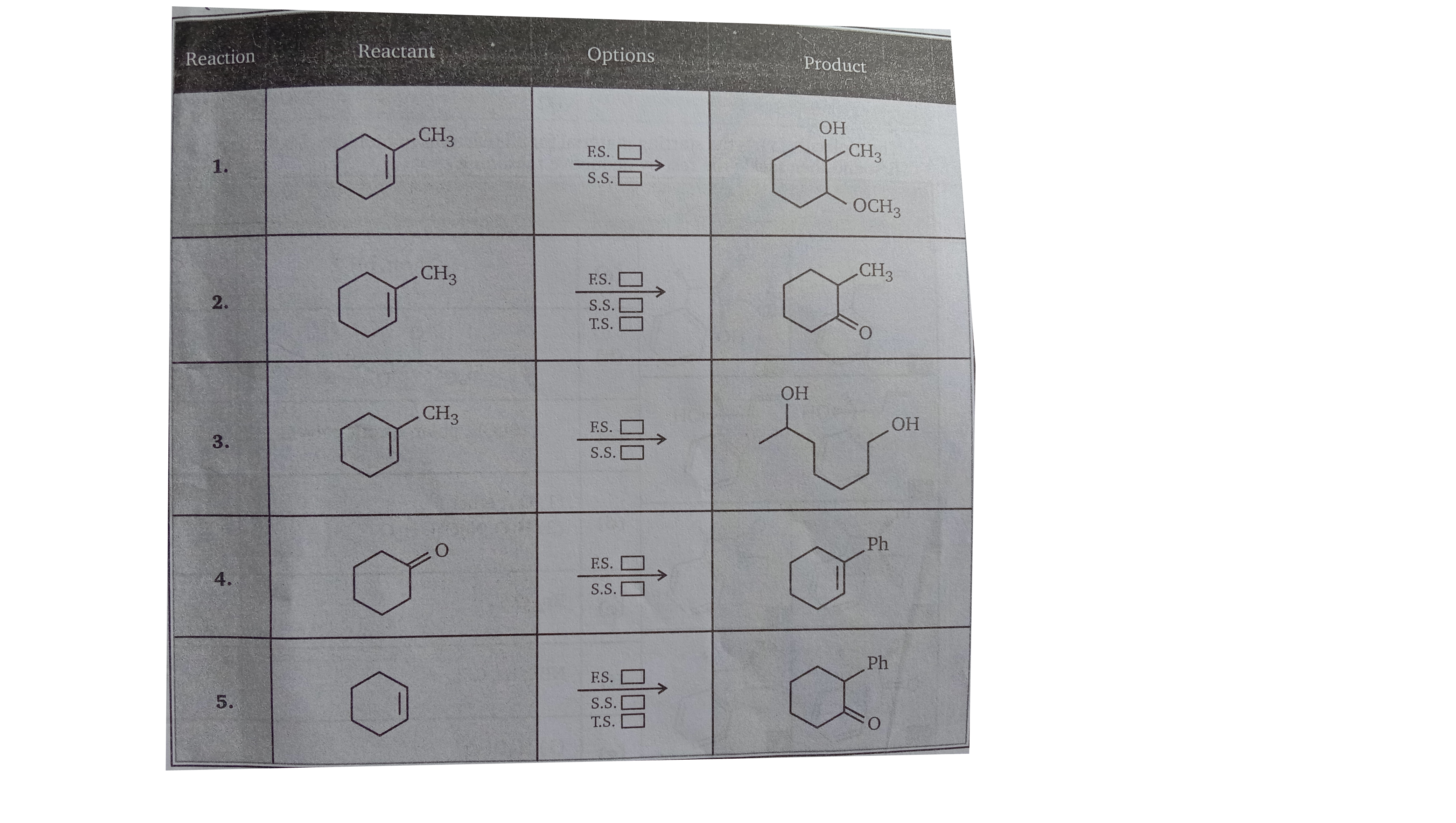

The correct Answer is:Reaction 1: B,D; Reaction 2: E,F,C; Reaction 3: I,A
Reaction 4: L,G Reaction 5: B,L,C
Reaction 1: B,D Reaction 2: E,F,C Reaction 3: I,A
Reaction 4: L,G, Reaction 5: B,L,C
Topper's Solved these Questions
- HYDROCARBONS (ALKENES)BOOK - MS CHOUHANCHAPTER - HYDROCARBONS (ALKENES)EXERCISE - LEVEL - 2
1 Videos
- HYDROCARBONS (ALKENES)BOOK - MS CHOUHANCHAPTER - HYDROCARBONS (ALKENES)EXERCISE - Level 1 (Q.211 To Q.232)
1 Videos
- HYDROCARBONS (ALKANES)BOOK - MS CHOUHANCHAPTER - HYDROCARBONS (ALKANES)EXERCISE - Level 1 (Q.31 To Q.50)
1 Videos
- HYDROCARBONS (ALKYNES)BOOK - MS CHOUHANCHAPTER - HYDROCARBONS (ALKYNES)EXERCISE - Level 1 (Q.1 To Q.30)
2 Videos
Similar Questions
Five amine synthesis are outlined below. In each reactions box enter a single letter designating the best reagent and conditions selected from the list at the bottom of the page.
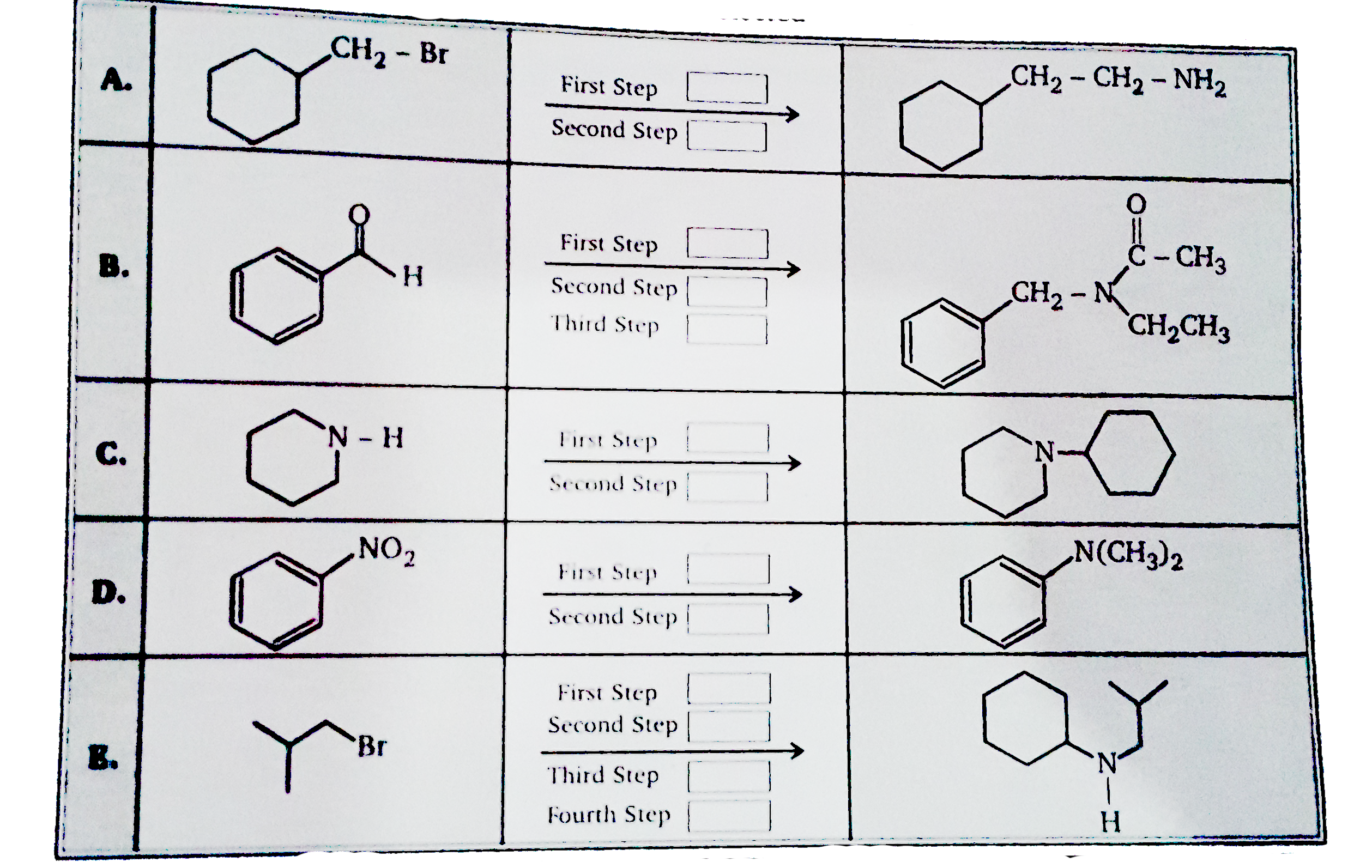
a) i) LiAlH4 in ether, ii) H2O & base
b) C2H5NH2(cat.H+)
c) NaCN in alcohol
d) H2 & Ni catalyst or H2 & Pd catalyst
e) NaN3 in alcohol
f) (CH3CO)2 & pyridine
g) C2H5Br
h)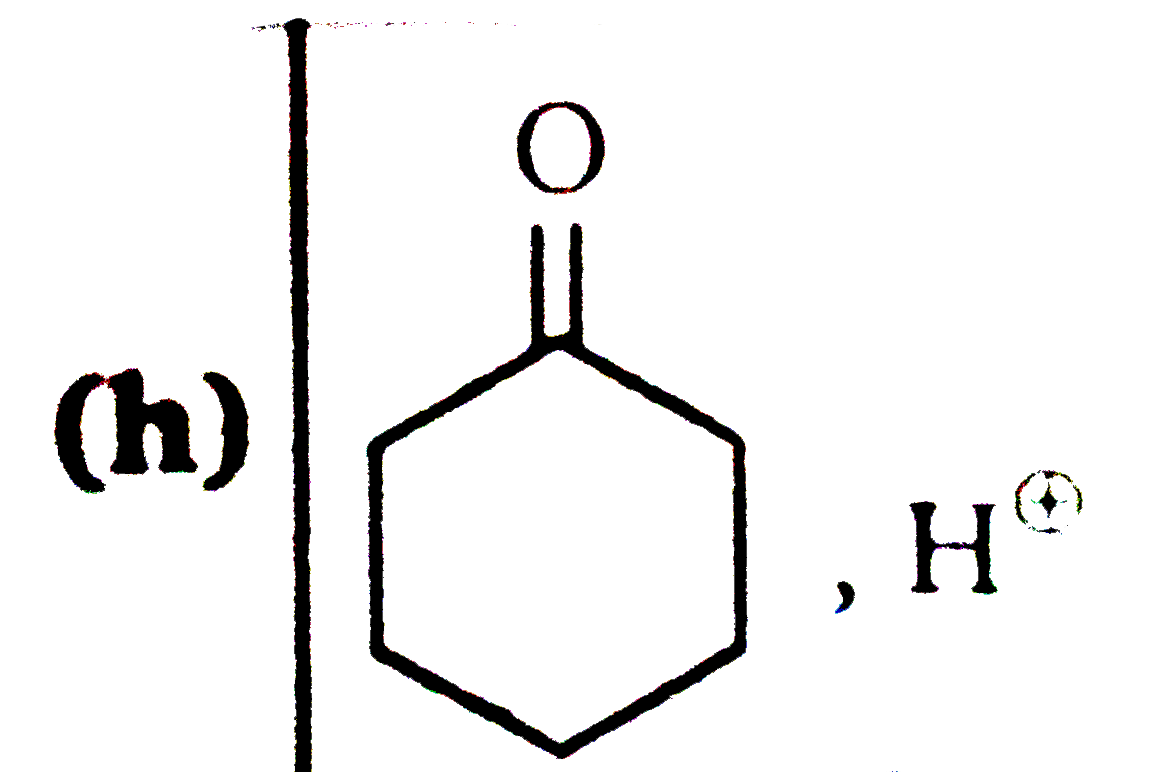
(i) 2CH3I & pyridine
j) KOH in H2O
View Solution In each reagent box write a letter designating the best reagent and condition selected from the above list of reagents.
In each reagent box write a letter designating the best reagent and condition selected from the above list of reagents.
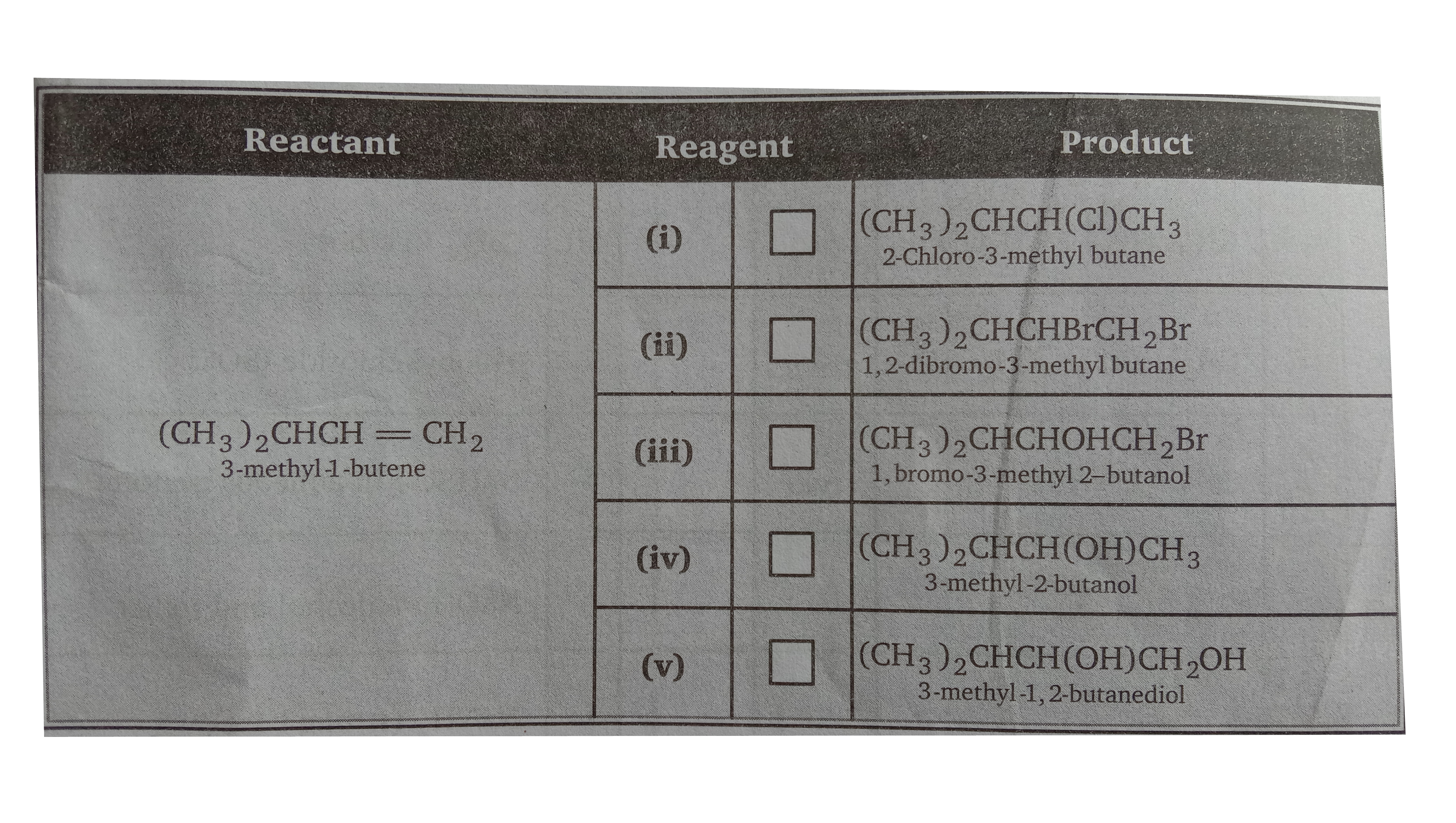
View Solution
Knowledge Check
In the reaction
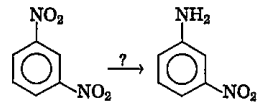
Which is the best reagent for the selective reduction?AKmnO4BH2SO4CH2S2NH3DSiC
Nitrobenzene is a versatile compound that may be converted inot a wide variety of subsituted benzenes. Five such synthesis are shown below. In each reaction box above an arrow write letters designating the reagents and conditions, selected from the list at the bottom of the page, that would effect the transformation. The reagents must be written in the answer box in the correct order of their use. You may assume appropriate heating or cooling takes place, and more than one equivalent of the reagent may be used if needed.
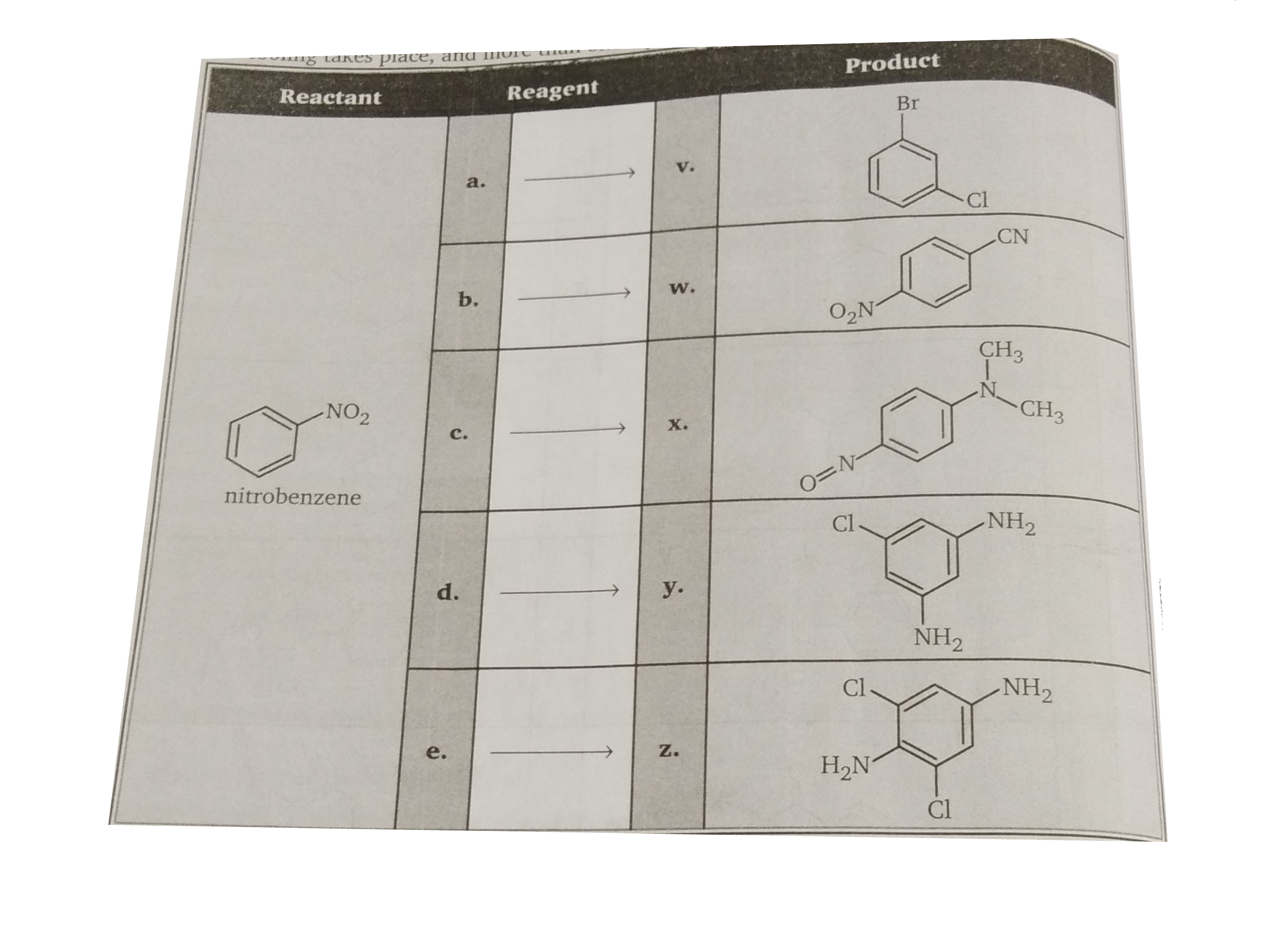
ReagentsReagentsAH2,NicatalystFCl2 & FeCl3BKBr & Cu2Br2GNaOH10% solutionCKCN & Cu2(CN)2H(CH3CO)2O, pyridineDHNO20∘CIHNO3/H2SO4ECH3I & pyridine
View SolutionAldol condensation proceeds by carbon-carbon bond formation between an enolate donor and a carbonyl acceptor. For each of the following aldol products (a thorugh e) select a donor and an acceptor compound from the list at the bottom of the page (compounds A through H). write the letter corresponding to your selection in the appropriate answer box.
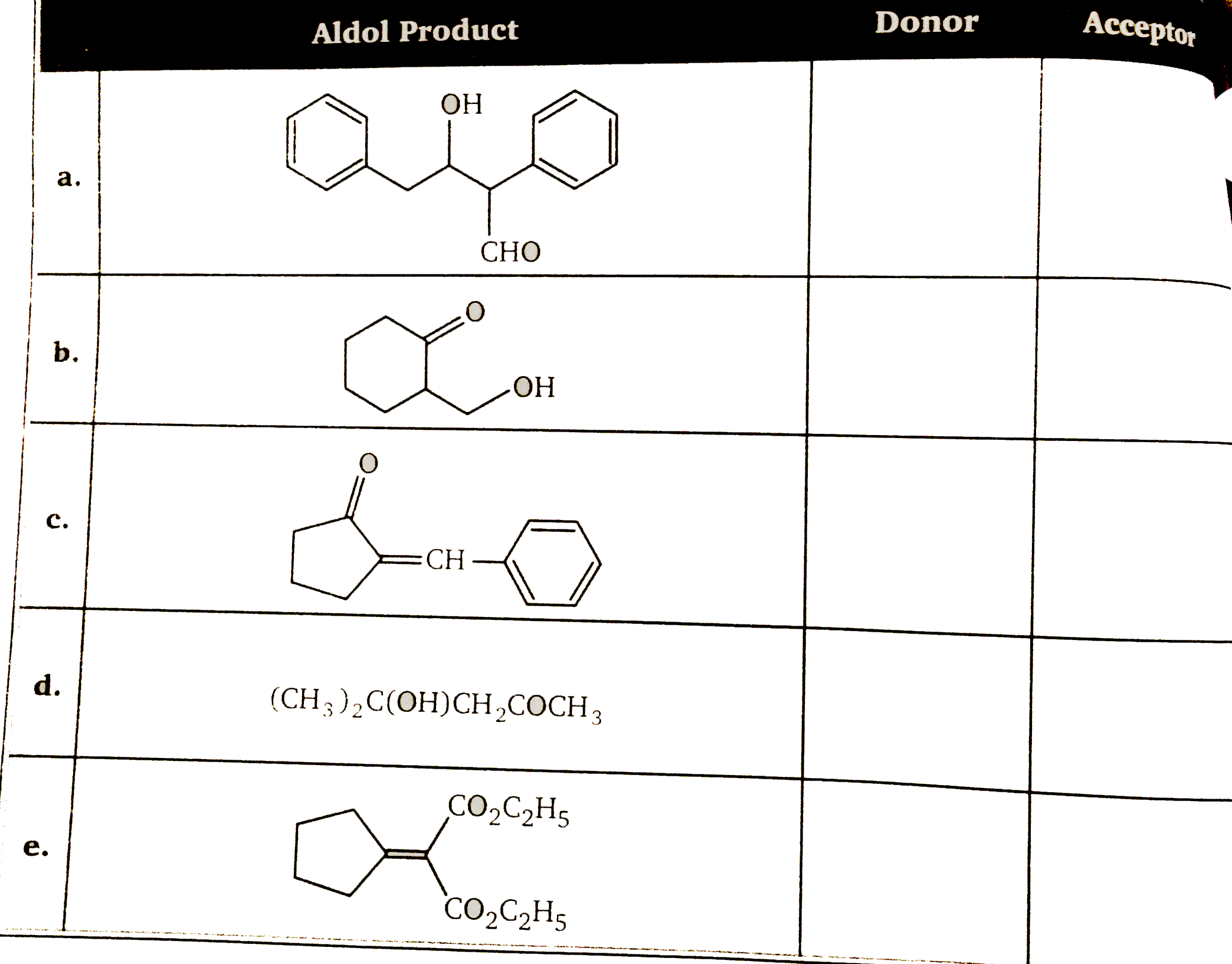 .
.

View SolutionAldol condensation proceeds by carbon-carbon bond formation between an enolate donor and a carbonyl acceptor. For each of the following aldol products (a thorugh e) select a donor and an acceptor compound from the list at the bottom of the page (compounds A through H). write the letter corresponding to your selection in the appropriate answer box.
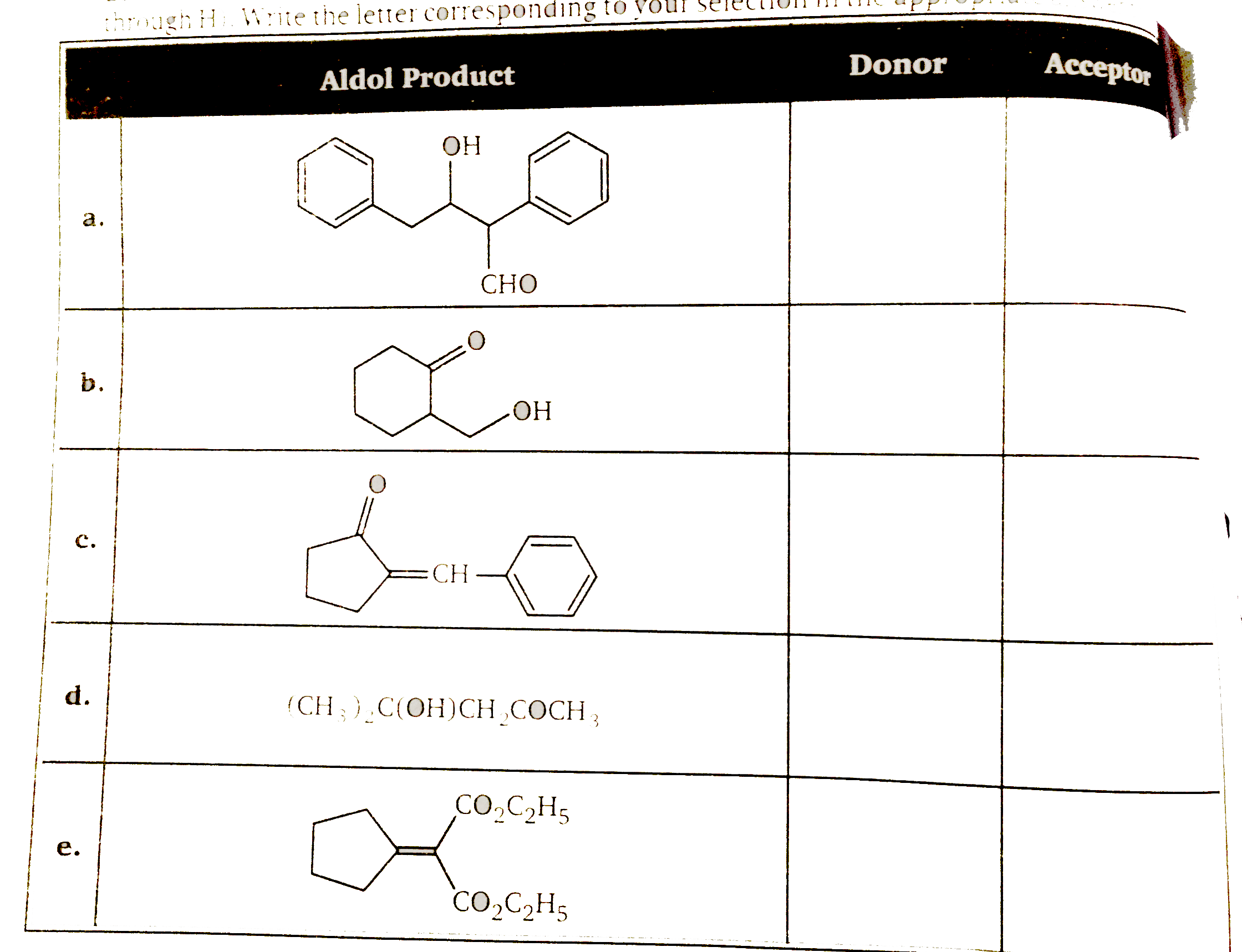 .
.
Q. .
.
View SolutionAldol condensation proceeds by carbon-carbon bond formation between an enolate donor and a carbonyl acceptor. For each of the following aldol products (a thorugh e) select a donor and an acceptor compound from the list at the bottom of the page (compounds A through H). write the letter corresponding to your selection in the appropriate answer box.
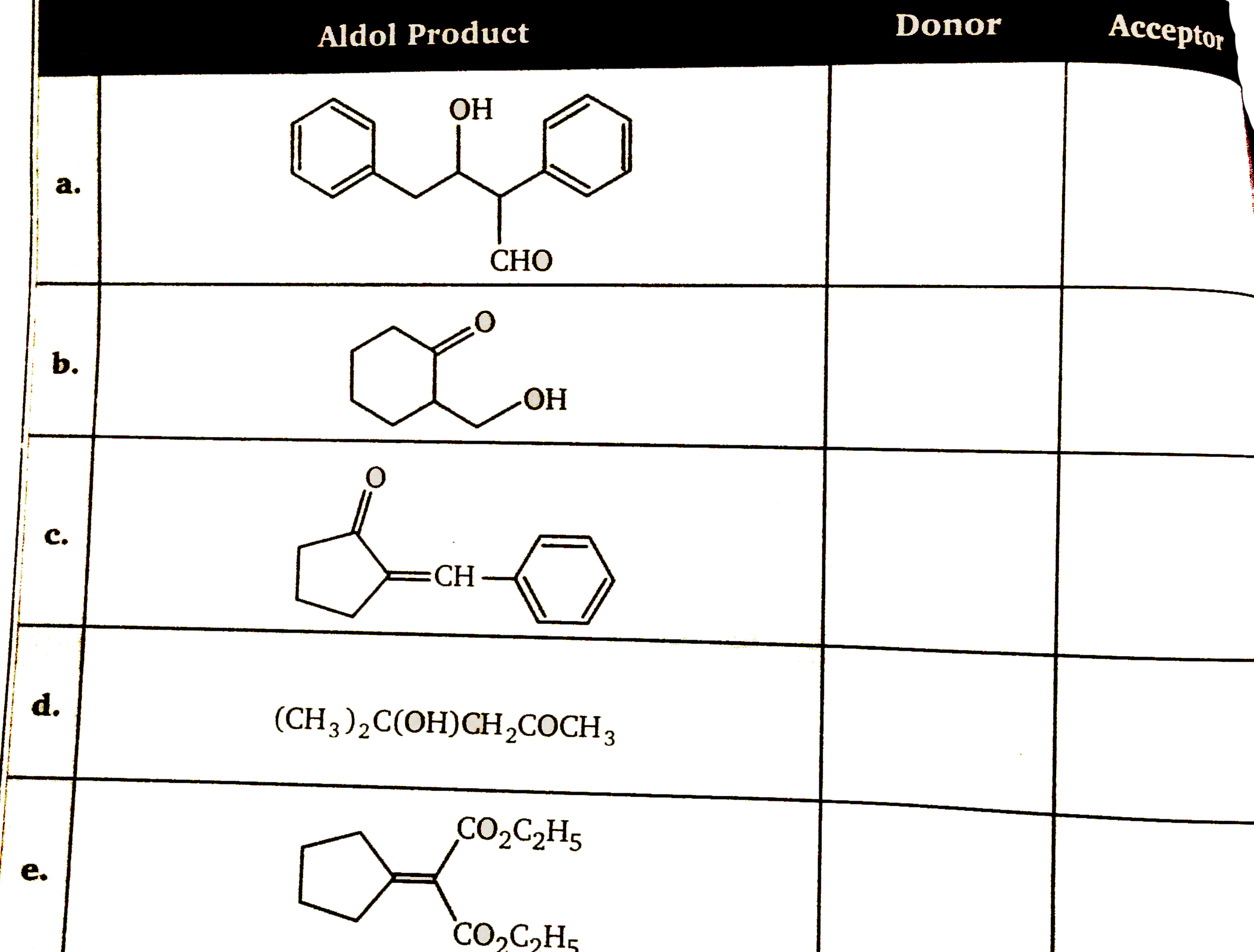 .
.
Q.
View SolutionAldol condensation proceeds by carbon-carbon bond formation between an enolate donor and a carbonyl acceptor. For each of the following aldol products (a thorugh e) select a donor and an acceptor compound from the list at the bottom of the page (compounds A through H). write the letter corresponding to your selection in the appropriate answer box.
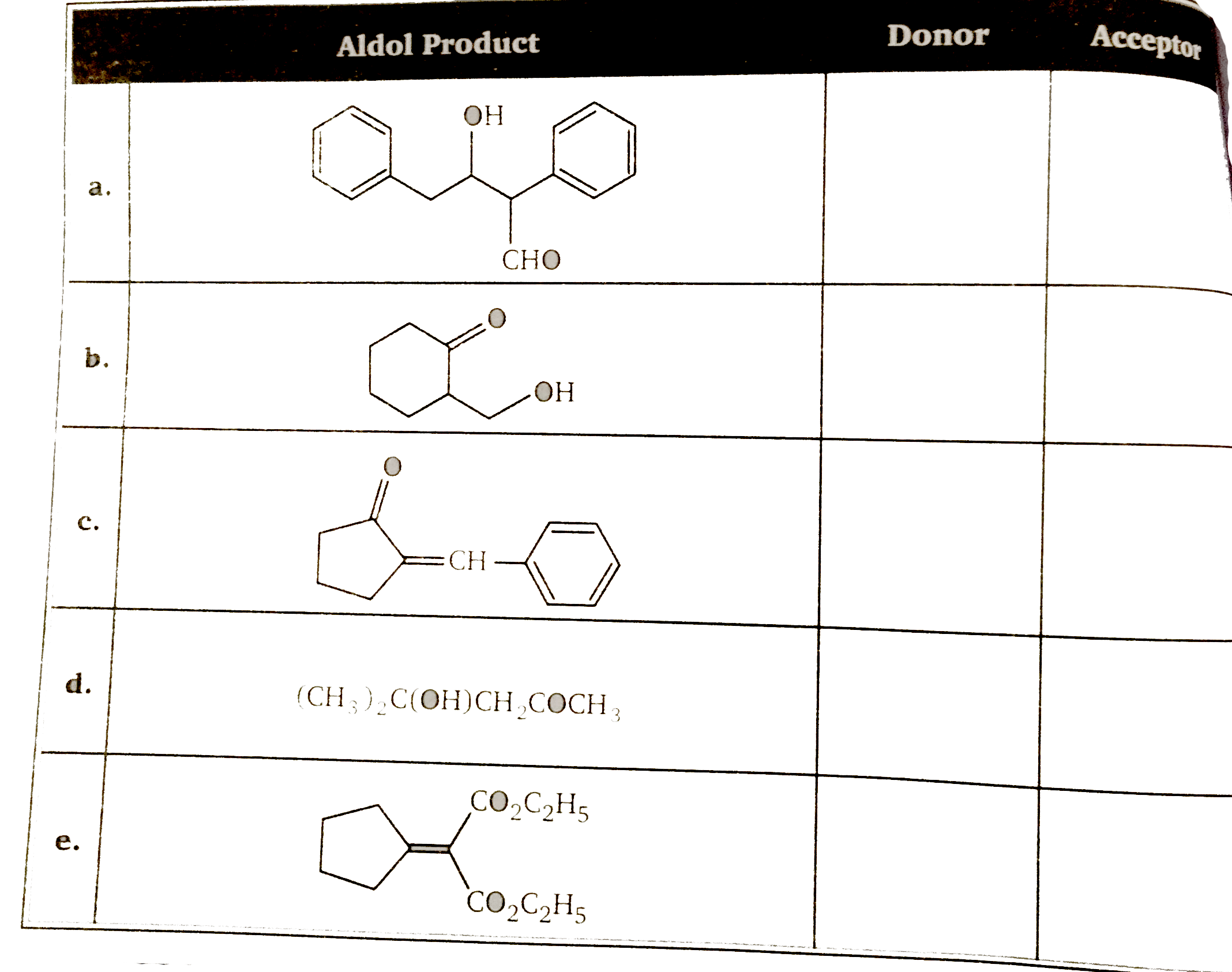 .
.
Q.
View SolutionAldol condensation proceeds by carbon-carbon bond formation between an enolate donor and a carbonyl acceptor. For each of the following aldol products (a thorugh e) select a donor and an acceptor compound from the list at the bottom of the page (compounds A through H). write the letter corresponding to your selection in the appropriate answer box.
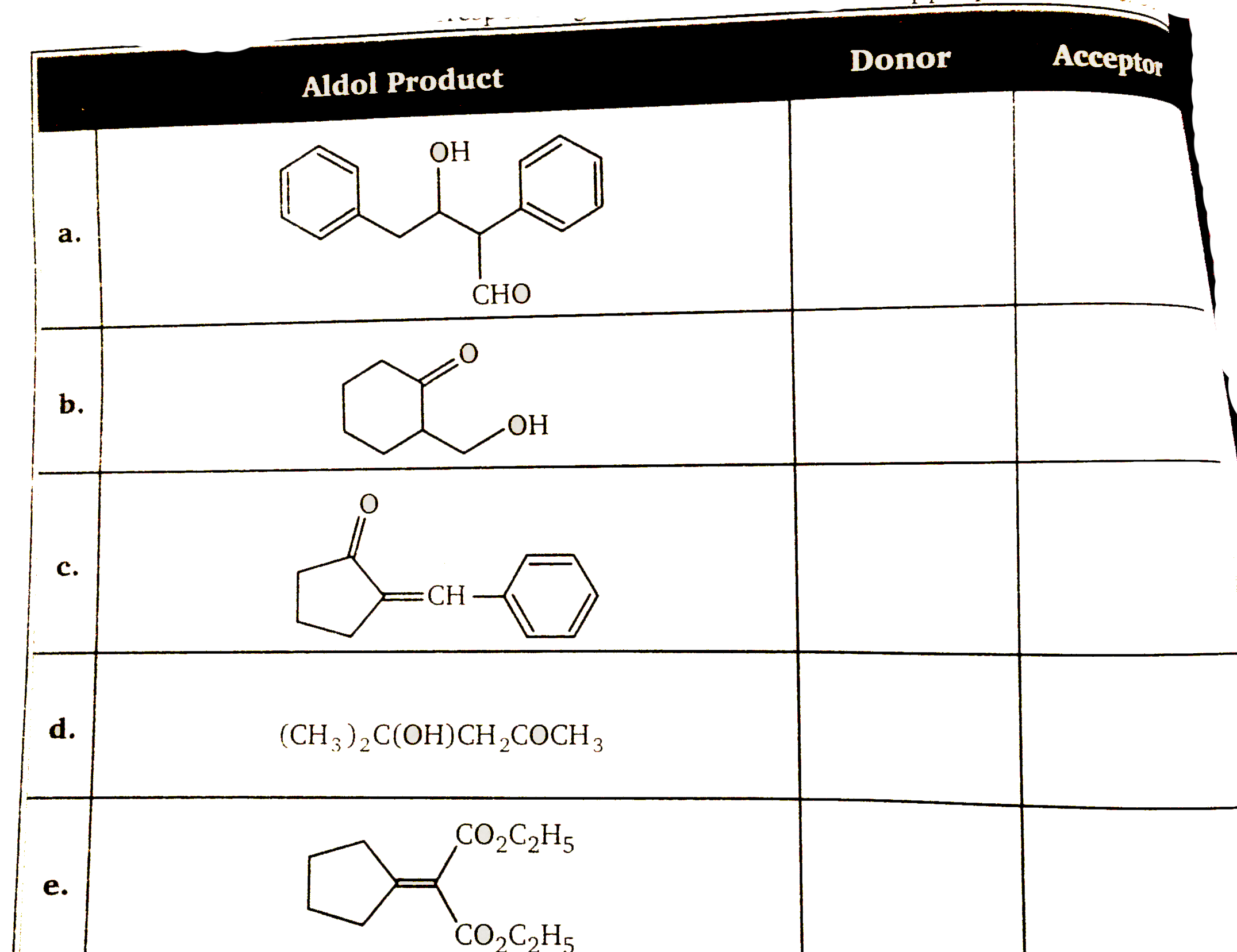 .
.
Q.
View SolutionAldol condensation proceeds by carbon-carbon bond formation between an enolate donor and a carbonyl acceptor. For each of the following aldol products (a thorugh e) select a donor and an acceptor compound from the list at the bottom of the page (compounds A through H). write the letter corresponding to your selection in the appropriate answer box.
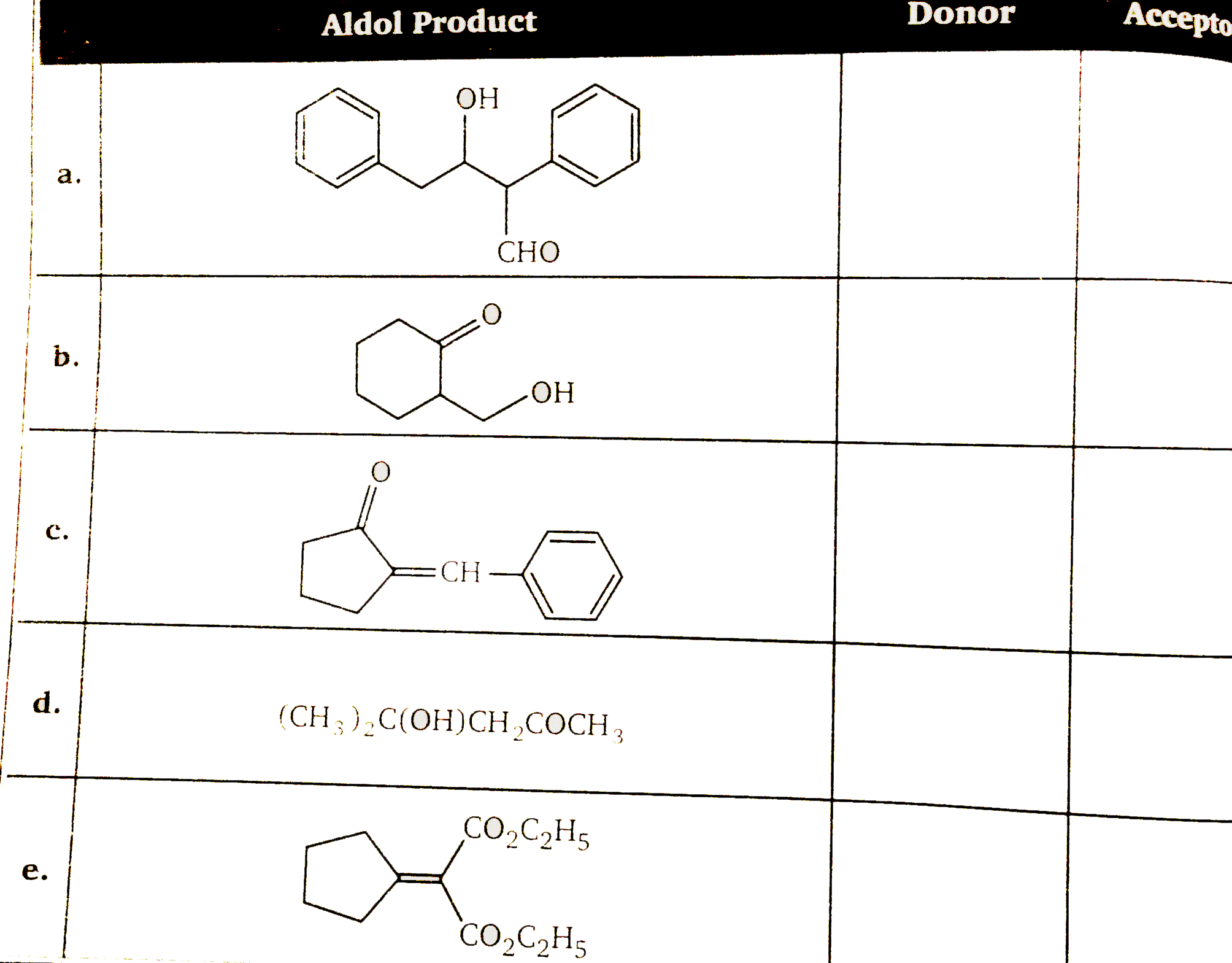 .
.
Q.
View Solution
